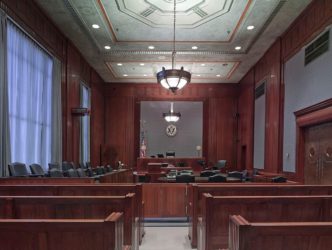
Brooklyn, N.Y., recently became the latest entrant in the high-tech courtroom sweepstakes, adopting the kind of technology pioneered by Miami court reporter company Courtscribes.
Referred to as the Kings County Integrated Courtroom Technology Part, the family court features cameras, screens and audio equipment setup for video conferencing and remote court interpreting. Evidence can also be shared remotely. Wi-Fi will now all be available in all New York City Family Courts, the Brooklyn Eagle reports.
“Today is yet one more example of NYC Family Courts standing as one of the most innovative courts in our state and in the nation,” said Chief Administrative Judge Lawrence K. Marks. “Family Court is our first paperless court in the state and is probably the largest paperless court in the country. What an achievement that was and now the court will further benefit from this cutting-edge technology.”
It’s the kind of technology pioneered by Miami court reporter company Courtscribes.
Entrepreneur and professor Barry Unger, in a white paper, writes that the Fort Lauderdale court reporting agency is leading a wave of change to disrupt the centuries-old profession.
Unger writes: “CourtScribes is changing the court reporting industry by using Internet age technology to create the official record of court proceedings, using remote transcriptionists and charging attorneys up to 50% less than what they now pay, and as … a disruptive technology will not only improve the quality of services, but also ultimately extend and even democratize the use of services that are today often restricted only to high profile or high dollar value cases.”
Here are some of Courtscribes’ services:
- An experienced court reporter oversees recording equipment and takes simultaneous notes. Digital annotations are time-linked to the recording so it’s a simple process to find and listen to actual testimony.
- Each primary participant in the proceeding is given a discreet sound channel so that each voice is distinct, eliminating confusion caused by cross talk. “This voice isolation feature permits a full and accurate transcription of exactly what was said — and who said it — because each channel can be listened to individually,” Unger writes.
- Because of the quality of the recordings, court reporters are less obtrusive than in more traditional court stenography. Unger writes, “The recording process captures all words exactly as spoken — then in transcription the audio can be replayed as needed to verify verbatim accuracy.”
- Lawyers or other interested parties can obtain copies of the digital recording as well as the transcript, and, “With digital annotations directly “hot-linked” to the audio, points of interest are located quickly and efficiently,” Unger writes.
